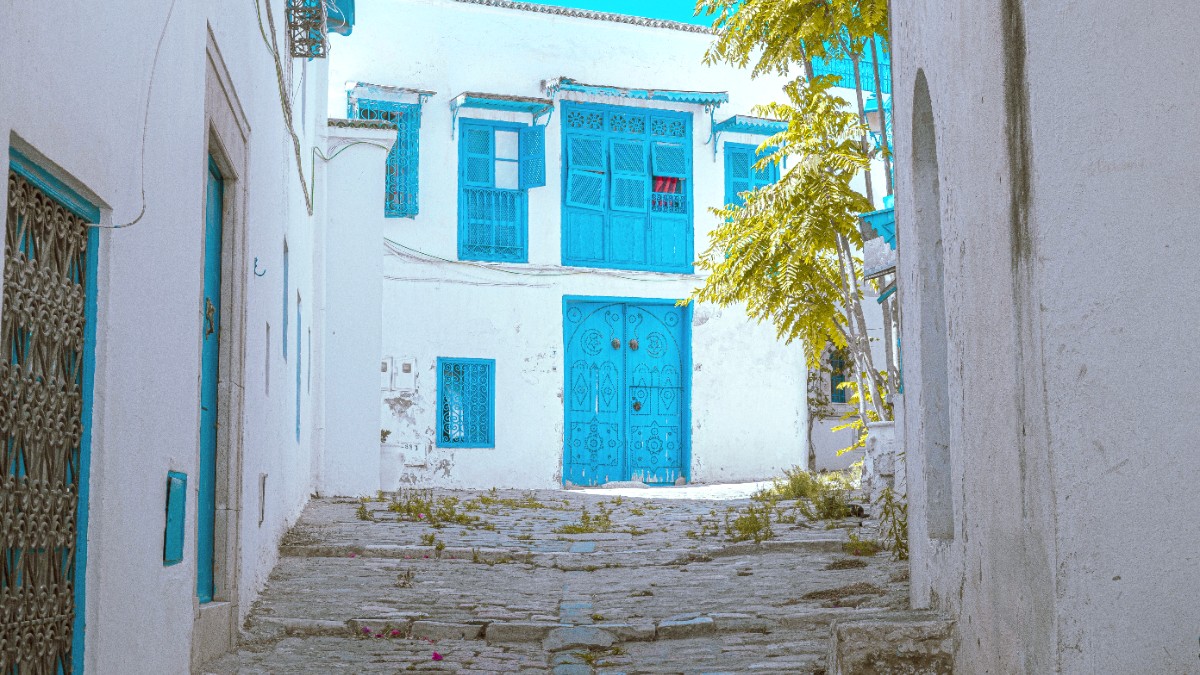
Tunisia
Tunisian cuisine's rich history is apparent in its diverse flavors and cooking techniques. Olive oil forms a fundamental component in almost every dish, a testament to Tunisia's long history of olive cultivation. The cuisine balances savory, spicy, and sometimes sweet elements, crafting a distinctive profile.
Meals often take on a communal character, emphasizing sharing. Accepting offers of food and drink is considered polite, as refusal might cause offense. Wash your hands before eating, especially if using bread to scoop up food, a traditional practice. Bread accompanies almost every meal and serves as an utensil. Tipping is appreciated. In traditional settings, specifically when eating communal dishes, use your right hand. Avoid pointing the sole of your foot at anyone.
Olives and olive oil are central to Tunisian cooking. Harissa, a fiery chili paste, serves as a common condiment, appearing in many dishes or on the side.
Common ingredients include fresh seafood (coastal areas), lamb, chicken, and sometimes beef or camel. Couscous, a staple grain, features prominently.
Abundant fresh vegetables like tomatoes, peppers, onions, carrots, and potatoes, along with legumes like chickpeas. A wide array of spices like cumin, coriander, and caraway present distinctive aromas.
The national dish of Tunisia. Steamed semolina grains served with a flavorful stew of meat (most commonly lamb, chicken, or fish) and various seasonal vegetables. Found in most traditional Tunisian restaurants.
A staple at family gatherings and celebrations.
A thin, delicate pastry pocket, deep-fried until crispy. Common fillings include a whole egg (often slightly runny), tuna or minced meat, chopped onions, and parsley. A popular appetizer. Found in many restaurants and from street food vendors.
Enjoy it hot and crispy!
A hearty and spicy chickpea soup, traditionally served with stale bread, olive oil, harissa, and often topped with tuna, capers, or a soft-boiled egg. A very popular breakfast or quick meal, especially from street vendors and small eateries.
Perfect for a chilly morning.
A sweet, strong, and refreshing green tea, often served with pine nuts. It is ubiquitous in cafes and offered as a gesture of hospitality.
Boukha is a traditional Tunisian fig brandy; Thibarine is a date liqueur, popular as a digestif after meals.
Predominantly found within upscale hotels in areas like Les Berges du Lac and Gammarth. These establishments feature refined Tunisian cuisine, often with a modern twist, as well as international fare, all served in elegant settings. Reservations are generally recommended.
Numerous mid-range restaurants are available across Tunis, notably in the Ville Nouvelle and popular tourist areas. Abundant options exist for budget-conscious travelers. The Medina, around the Central Market, and in local neighborhoods, offer authentic and very inexpensive meals.
Tunisian cuisine often features meat or fish, yet vegetarian dishes are available. Vegan options can pose more challenges. As a Muslim-majority country, most meat served in Tunisia is Halal. Kosher food is extremely limited.
Several local tour operators present cooking classes focused on Tunisian cuisine. These often start with a guided visit to a local market to select fresh ingredients, followed by hands-on preparation of traditional dishes.
A full farm-to-table experience.
Less commonly available as organized tours directly from Tunis, but private arrangements might be possible for those interested in rural food production. This could involve visiting olive groves or vineyards.
Inquire with local tourism offices.
Excellent place to find fresh local produce, spices, and delicacies.
Growing number of restaurants offering Italian, French, Asian, etc., in modern districts.
Occasional food-related festivals might coincide with harvest seasons or cultural celebrations.
Traditional Tunisian fine dining in historical settings (e.g., Dar El Jeld).
Fricassé is a deep-fried sandwich roll with tuna, egg, olives, harissa. Ojja is scrambled eggs with tomatoes, peppers, and sometimes sausage.
Excellent on-the-go meals.
Makroudh are semolina pastries with dates, soaked in honey. Bambalouni are light, fried doughnuts, served hot with sugar.
Sweet treats to satisfy cravings.
French-influenced pastries and cakes are widely available in bakeries and cafes. During Ramadan, special dishes like Chorba and Assida Zgougou (pine nut cream dessert) become widely available.
Embrace the communal dining character. It is polite to accept food offers. Bread often serves as an eating tool. Tipping is customary. For authentic experiences, explore the Central Market.
Wash your hands before eating, especially if you plan to use bread to scoop up food, a traditional practice.
Tipping is appreciated in most dining establishments. A modest amount, typically 5-10% of the bill, is a customary gesture for good service.
In traditional settings, especially when eating communal dishes, use your right hand. Avoid pointing the sole of your foot at anyone, as it is considered disrespectful.
Most tourist-oriented restaurants feature menus in Arabic, French, and often English. Do not hesitate to ask for clarification on dishes.
Pictures on menus are also common.
Tunisian cuisine can be spicy, especially with Harissa. If you prefer milder flavors, you can request "blight" (light) or "mou-sh harr" (not spicy).
Harissa is usually served on the side.
During Ramadan, special dishes like Chorba (soup) and various sweet pastries are widely available, creating an unique evening culinary atmosphere.
Assida Zgougou, a pine nut cream dessert, is traditionally prepared for the Mouled (Prophet's Birthday) holiday, signifying festive occasions.
Specific regions may have seasonal produce that sparks dishes unique to certain times of year, explore local markets for these.
Engaging with local food vendors and trying street food presents an authentic taste of Tunis. Do not shy away from small, bustling eateries, as they often serve the most traditional and flavorful dishes.